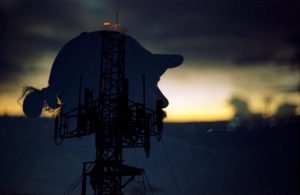
LEO Satellites: Revolutionizing Global Connectivity with Low Earth Orbit Technology
LEO satellites, or Low Earth Orbit satellites, are a type of satellite that operates at an altitude of around 160 to 2,000 kilometers above the Earth’s surface. This relatively low orbit allows LEO satellites to provide a range of benefits, including faster data transfer rates, lower latency, and increased reliability. In this article, we will explore the world of LEO satellites and their role in shaping the future of global connectivity.
How LEO Satellites Work
LEO satellites are launched into space using a rocket and then deployed into their designated orbit. Once in orbit, they begin to transmit and receive data to and from Earth-based stations. The low altitude of LEO satellites allows them to provide a range of services, including broadband internet, voice communications, and data transfer. One of the key advantages of LEO satellites is their ability to provide low-latency connections, making them ideal for applications that require real-time communication, such as video conferencing and online gaming.
Benefits of LEO Satellites
The benefits of LEO satellites are numerous and far-reaching. For example, they offer a cost-effective solution for providing broadband internet to remote and underserved communities. They also provide a reliable means of communication in areas where traditional infrastructure is limited or non-existent. Additionally, LEO satellites can be used to support a range of applications, including Earth observation, navigation, and weather forecasting. The use of LEO satellites also enables the creation of a global network of interconnected satellites, providing seamless and uninterrupted coverage around the world.
Challenges and Limitations of LEO Satellites
While LEO satellites offer a range of benefits, they also present several challenges and limitations. One of the main challenges is the need for a large constellation of satellites to provide global coverage. This requires significant investment and infrastructure, as well as the development of advanced technologies to manage and operate the satellites. Another challenge is the risk of congestion and interference in the low Earth orbit, which can impact the performance and reliability of the satellites. Furthermore, the deployment of LEO satellites also raises concerns about space debris and the long-term sustainability of the technology.
Future of LEO Satellites
Despite the challenges and limitations, the future of LEO satellites looks bright. With the increasing demand for global connectivity and the growing need for reliable and fast data transfer, LEO satellites are poised to play a critical role in shaping the future of communication and technology. Companies such as SpaceX, Amazon, and OneWeb are already investing heavily in the development of LEO satellite constellations, with plans to launch thousands of satellites in the coming years. As the technology continues to evolve and improve, we can expect to see even more innovative applications and use cases for LEO satellites, from providing internet access to remote communities to supporting the development of smart cities and autonomous vehicles.



